
Thomas A. Brooks is a retired Rear-Admiral of the US Navy and past Director of Naval Intelligence, which office he led from 1988 to 1991. [1] [2] [3]

Thomas A. Brooks is a retired Rear-Admiral of the US Navy and past Director of Naval Intelligence, which office he led from 1988 to 1991. [1] [2] [3]
Brooks obtained his bachelor's degree from Fordham University and Masters degree from Fairleigh Dickinson University. He enlisted in the Naval Reserve and then came on active duty for the US Navy in 1958. [3]
Admiral Brooks described what he considered to be a cover-up of the 1967 USS Liberty incident as a “national disgrace” and stated “The Navy was ordered to hush this up, say nothing, and allow the sailors to say nothing. The Navy rolled over and played dead.” [4] [5]
For a time he served as the Assistant Naval Attaché in Istanbul. [3]
He was involved in the apprehension of the MS Achille Lauro terrorists, and in the 1986 United States bombing of Libya, by which Ronald Reagan taught Muammar Gaddafi not to bomb European discos. [2] Unfortunately the latter did not take well to the lesson and ordered the 21 December 1988 bombing of Pan Am Flight 103, which exploded in mid-air and crashed on the town of Lockerbie in Scotland after a bomb detonated, killing all 259 people aboard, and 11 people in Lockerbie.
Brooks spent 33 years as a Naval Intelligence officer, and retired in 1991 after a three-year posting as George W. Bush's Director of Naval Intelligence. [3]
Brooks then spent 10 years in private industry with AT&T. [3]
In 1995, he was appointed to the Defense Policy Board. [3]
He is a co-author of the first English-language book on Admiral Gorshkov: The Man Who Challenged the U.S. Navy. [6]

The USS Liberty incident was an attack on a United States Navy technical research ship, USS Liberty, by Israeli Air Force jet fighter aircraft and Israeli Navy motor torpedo boats, on 8 June 1967, during the Six-Day War. The combined air and sea attack killed 34 crew members, wounded 171 crew members, and severely damaged the ship. At the time, the ship was in international waters north of the Sinai Peninsula, about 25.5 nmi northwest from the Egyptian city of Arish.

William Oliver Studeman is a retired admiral of the United States Navy and former deputy director of the Central Intelligence Agency, with two extended periods as acting Director of Central Intelligence. As deputy director of Central Intelligence, he served in the administrations of George H. W. Bush and Bill Clinton under three directors of Central Intelligence, Robert Gates, R. James Woolsey Jr., and John M. Deutch. Studeman retired from the navy in 1995 after almost 35 years of service. Between 1988 and 1992 he was director of the National Security Agency; he was the Director of Naval Intelligence, from September 1985 to July 1988.
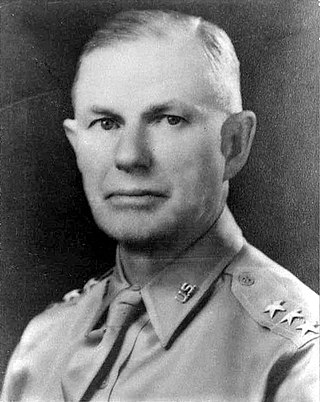
Walter Campbell Short was a lieutenant general and major general of the United States Army and the U.S. military commander responsible for the defense of U.S. military installations in Hawaii at the time of the Japanese attack on Pearl Harbor on December 7, 1941.

Jeremiah Andrew Denton Jr. was an American politician and military officer who served as a U.S. Senator representing Alabama from 1981 to 1987. He was the first Republican to be popularly elected to a Senate seat in Alabama. Denton was previously a United States Navy rear admiral and naval aviator taken captive during the Vietnam War.

Bobby Ray Inman is a retired United States Navy admiral who held several influential positions in the United States Intelligence Community.

Thomas Hinman Moorer was an admiral and naval aviator in the United States Navy who served as the chief of naval operations from 1967 to 1970, and as the seventh chairman of the Joint Chiefs of Staff from 1970 to 1974. He was implicated in a spy ring within the White House during the Nixon administration, but never prosecuted.
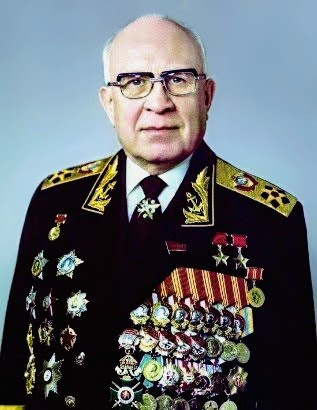
Sergey Georgyevich Gorshkov was an admiral of the fleet of the Soviet Union. Twice awarded the title Hero of the Soviet Union, he oversaw the expansion of the Soviet Navy into a global force during the Cold War.
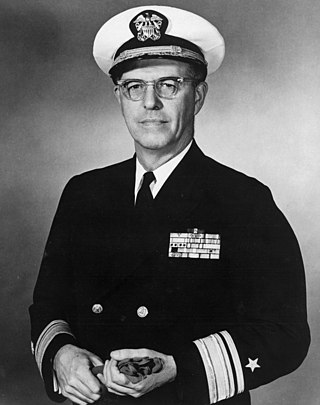
Rear Admiral Draper Laurence Kauffman was an American underwater demolition expert, who served during the 1960s as 44th Superintendent of the United States Naval Academy. During World War II, he organized the first U.S. Navy Combat Demolition Units from which the SEALs and Navy Explosive Ordnance Disposal (EOD) would evolve. His wartime service also included participation in the invasions of Saipan, Tinian, Iwo Jima, and Okinawa.

Rear Admiral Tony Lee Cothron was the Director of Intelligence for the Chief of Naval Operations and the 62nd Director of Naval Intelligence. He is currently a professor at Liberty University.

Paul Edward Tobin Jr. is a retired rear admiral of the United States Navy. He served as Oceanographer of the Navy from 1996 to 1998 and Director of Naval History from 2005 to 2008.

Admiral Stanley Roger Arthur, USN was the Vice Chief of Naval Operations from 1992 to 1995, culminating more than 37 years as an officer in the United States Navy.

Rear Admiral Matthew Lewis Klunder was the Chief of Naval Research at the Office of Naval Research in Arlington, Virginia from 2011 to 2014. In July 2010, Klunder reported as director of Intelligence, Surveillance and Reconnaissance Capabilities Division, OPNAV N2/N6F2 following his assignment as the 83rd Commandant of Midshipmen of the United States Naval Academy.
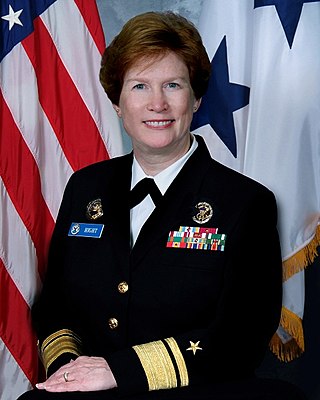
Elizabeth Ann Hight is a retired United States Navy rear admiral who served as the vice director of the Defense Information Systems Agency (DISA). She assumed this post in December 2007. In 2008, she was nominated for appointment to the grade of vice admiral and assignment as director, Defense Information Systems Agency; commander, Joint Task Force – Global Network Operations; and deputy commander, U.S. Strategic Command Global Network Operations and Defense, Arlington, Virginia. Her nomination was rejected by the Senate due to a perceived conflict of interest with her husband, retired Air Force Brigadier General Gary Salisbury, who is vice president of business development and sales for Northrop Grumman Corp.'s mission systems sector, defense mission systems division. She retired from the Navy in 2010.
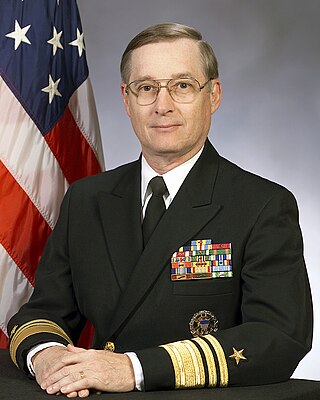
Vice Admiral Lowell Edwin Jacoby, USN was the 14th director of the Defense Intelligence Agency. Previously he was Director for Intelligence (J-2) Joint Staff in the Office of the Chairman of the Joint Chiefs of Staff from 1999 to 2002, and the Director of Naval Intelligence and commander, Office of Naval Intelligence from 1997 to 1999. He was the Director for Intelligence, U.S. Pacific Command from 1994 to 1997 and Commander, Joint Intelligence Center, Pacific from 1992 to 1994. He was Assistant Chief of Staff, Intelligence, U.S. Pacific Fleet from 1990 to 1992.

James Daniel Howard was Special Assistant to President of the United States Ronald Reagan from July 1986 to February 1988, United States Assistant Secretary of Defense for Public Affairs from February 1988 to May 1989 and Under Secretary of the Navy from 1989 to 1993.
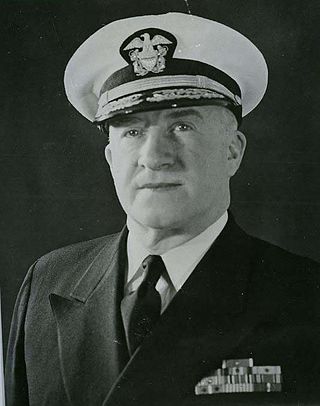
Earl Everett Stone was a rear admiral in the United States Navy. He is most noted for being the first director of the Armed Forces Security Agency, the predecessor to the National Security Agency.
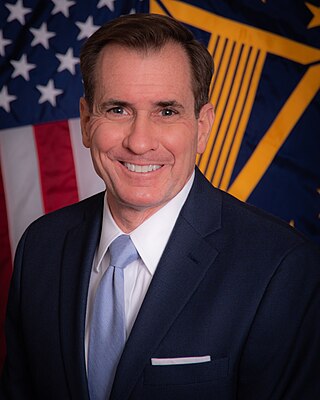
John Francis Kirby is a retired rear admiral in the United States Navy serving as Coordinator for Strategic Communications at the National Security Council in the White House since late May 2022. He previously served as Pentagon Press Secretary for the first year and a half of the Biden Administration, and worked as a military and diplomatic analyst for CNN from 2017 to 2021. He served in the Obama administration as the spokesperson for the United States Department of State from 2015 to 2017.

Charles Perry Mason was a highly decorated officer in the United States Navy with the rank of Vice admiral. An early naval aviator, he distinguished himself as Commanding officer of aircraft carrier USS Hornet (CV-8), which was sunk during the Battle of the Santa Cruz Islands in late October 1942. Mason was subsequently promoted to Rear admiral and served successively as Commander, Aircraft, Solomons and Chief of the Naval Air Intermediate Training Command at Naval Air Station Pensacola, Florida.